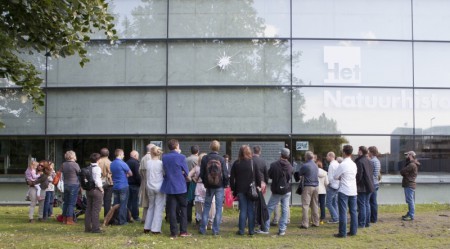Marc Abrahams's Blog, page 326
June 3, 2015
The Kajimoto laboratory (part 2): Muscular laugh enhancement
For another cross-modal human/computer research project [see previous article in this series] which has been developed by the Kajimoto laboratory (a department of The University of Electro-Communications, Tokyo, Japan) investigates ‘The Enhancement of Laugh by using Muscle activity’, [note: paper mostly in Japanese]
“On television show, we are familiar with artificial sound of laughter so called ‘canned laughter’ or ‘laugh track’. It generally has an enhancement effect of human’s laugh. However, if the sound is played when the user dislike the contents, it works negatively. To cope with this problem, we propose a system that produces the laugh track synchronized with the user’s laugh motion. We use a myoelectric signal from diaphragmatic muscle to detect initial laugh, and dolls around the user to produce laugh sound. We speculated that although initial laugh trigger from the user is necessary, the system still can effectively enhance the laugh activity, and even affect the subjective quality of the contents.”
The lab has provides two movies about the projects [in mpg and mp4 formats] movie [1] and movie [2]
Coming soon : The Kajimoto laboratory – a partial profile (part 3)

June 2, 2015
“Poetry and homeopathy: an exploration”
The field of Extradisciplinary Research, which does not yet exist, reached a zenith with this article published in the year 2006:
“Poetry and homeopathy: an exploration” [Original Research Article], Jacqueline M. Mardon, Homeopathy, volume 95, issue 1, January 2006, pages 20-27. The author explains:
“This paper explores a relationship between poetry and homeopathy…. Both poetry and homeopathy are at the edges, marginalized in their respective disciplines of literature and medicine.”

June 1, 2015
The Kajimoto laboratory (part 1): Goosebumps
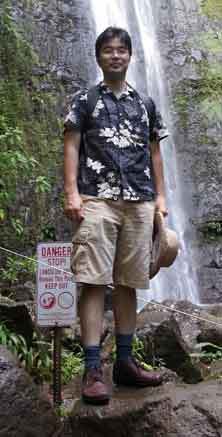 The main research theme at the Kajimoto laboratory (a department of The University of Electro-Communications, Tokyo, Japan), is human/computer interfaces, especially tactile or cross-modal interfaces. Professor Hiroyuki Kajimoto [pictured] established the laboratory in April 2007, and since then it has produced a series of unique research projects – for example:
The main research theme at the Kajimoto laboratory (a department of The University of Electro-Communications, Tokyo, Japan), is human/computer interfaces, especially tactile or cross-modal interfaces. Professor Hiroyuki Kajimoto [pictured] established the laboratory in April 2007, and since then it has produced a series of unique research projects – for example:
‘Facilitating a Surprised Feeling by Artificial Control of Piloerection on the Forearm,’ by S. Fukushima, and H. Kajimoto, published in AH’12, March 08 – 09 2012, Megève, France. The project investigated if it might be possible to induce ‘chill’-like sensations in human subjects by artificially inducing piloerection (goose bumps) electrostatically.
“We recruited six male participants, aged 21 and 22. We could not find any female participants who did not shave their forearm hair. The participants were tested alternately under the two conditions (audio without piloerection and audio with piloerection), and the whole process was repeated ten times.“
Discussion:
“As expected, both the amount of subjective surprise and the SCR value (duration index) increased significantly when piloerection was added to the audio emotional stimulation. After the experiment, some of the participants made the following comment: ‘chilly sensation was evoked on the whole body when audio stimulation and piloerection were presented, but it was not evoked with only audio stimulation’. This comment seems to reflect the experimental results. After the experiment, the investigator asked participants to verbally express the sensation of artificial piloerection. All participants stated that, ‘this sensation resembles a wind sensation’. Two participants said: ‘I felt like I was wearing aura or cotton’. Since participants had never previously experienced this piloerection, they used various haptic sensations to describe it”
Here’s a short movie about the work.
Coming soon: The Kajimoto laboratory – a partial profile (part 2)

Jennifer Verdolin joins Luxuriant Flowing Hair Club for Scientists (LFHCfS)
Jennifer Verdolin has joined the Luxuriant Flowing Hair Club for Scientists (LFHCfS). She says:
I am interested in the social and mating behavior of mammals (including humans). When I am not doing interesting research on lemurs, sea turtles, humans, or prairie dogs, I’m busy being a part time radio personality, author, and occasional movie star. Hair, its color, texture, and length can be an honest signal of mate quality- unless of course it is dyed or composed of extensions. The natural length, softness, and color of my hair has long fascinated many, from males on lek mating grounds (otherwise known as nightclubs) to strangers of either gender while I am out and about foraging in grocery stores. There is only one individual of my own species permitted to cut or otherwise alter my mane. Although grooming my locks can be tedious and arduous, the end result is well worth the 10% of my time budget.
Jennifer Verdolin, Ph.D., Ph.D, LFHCfS
Visiting Lecturer
Department of Evolutionary Anthropology
Duke University
Durham, North Carolina, USA


May 30, 2015
Join the 20th Dead Duck Day: June 5th
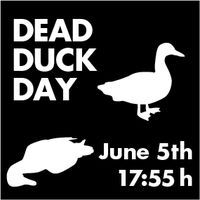 Friday June 5th, 2015 is the 20th edition of Dead Duck Day, arriving precisely one year after last year’s Dead Duck Day. At exactly 17:55 h we will honor the mallard duck that became known to science as the first (documented) ‘victim’ of homosexual necrophilia in that species, and earned its discoverer the 2003 Ig Nobel Biology Prize.
Friday June 5th, 2015 is the 20th edition of Dead Duck Day, arriving precisely one year after last year’s Dead Duck Day. At exactly 17:55 h we will honor the mallard duck that became known to science as the first (documented) ‘victim’ of homosexual necrophilia in that species, and earned its discoverer the 2003 Ig Nobel Biology Prize.
Dead Duck Day also commemorates the billions of other birds that die from colliding with glass buildings, and challenges people to find solutions to this global problem.
Please join the free, short open-air ceremony next to the new wing of the Natural History Museum Rotterdam (the Netherlands), right below the new Dead Duck Memorial Plaque— the very spot where that duck (now museum specimen NMR 9989-00232) met his dramatic end.
This is what will happen:
The introduction of the new Dead Duck Day logo and the ‘Dead Duck Day fashion line’, designed by Mark Prinsen.
A tribute to the recently deceased Robert W. Dickerman (1926), the biologist who discovered homosexual necrophilia in ground squirrels in 1959, and gave necrophilia a good name.
The reading of the special ‘Dead Duck Day Message’, send in by Anil Aggrawal, professor of forensic medicine, Maulana Azad Medical College, New Delhi, and foremost expert on human necrophilia.
Menno Schilthuizen reads appropriate (duck) parts from his new book ‘Nature’s nether regions’.
The announcement of the performance of ‘The Homosexual Necrophiliac Duck Opera’ at the Tête à Tête Opera Festival in Londen, 8/9 August 2015.
A six-course duck dinner, after the ceremony
The traditional six-course (dead) duck dinner at the famous Tai Wu Restaurant is also open to the public (at your own expense). Reserve you seat by e-mailing to: info [at] hetnatuurhistorisch.nl
BONUS: More on the history of Dead Duck Day on the official Dead Duck Day website: www.deadduckday.com

“… it does not exceed the precision of an upholsterer”
The non-scientific mind has the most ridiculous ideas of the precision of laboratory work, and would be much surprised to learn that, excepting electrical measurements, the bulk of it does not exceed the precision of an upholsterer who comes to measure a window for a pair of curtains.
—Charles S. Peirce (1908)
No doubt Charles Sanders Peirce (1839–1914) was exaggerating somewhat. But when it came to metrological matters, Peirce (pronounced purse) knew what he was talking about. Best known as a logician, mathematician, and America’s most original philosopher (a founder of the philosophical school known as pragmatism), he was also a leading scientist. Peirce made precision measurements, and improved techniques for making them. His work helped remove American metrology from under the British shadow and usher in an American tradition.
Peirce was the first to experimentally tie a unit, the meter, to an absolute standard, the wavelength of a spectral line. For several reasons, that contribution has not received much attention. First, he never finished it to his satisfaction and left only fragmentary reports in his 12 000 published pages and 80 000 pages of handwritten notes and letters—mostly on logic, mathematics, science, and philosophy. Second, Peirce’s idea was almost immediately taken up and significantly improved by Albert Michelson, using the interferometer that he and Edward Morley had built to measure ether drift. Finally, Peirce’s chaotic professional and personal life has hindered a comprehensive assessment of his contributions….
—So begins Robert Crease‘s word portrait “Charles Sanders Peirce and the first absolute measurement standard“, in Physics Today. This photo shows Peirce:
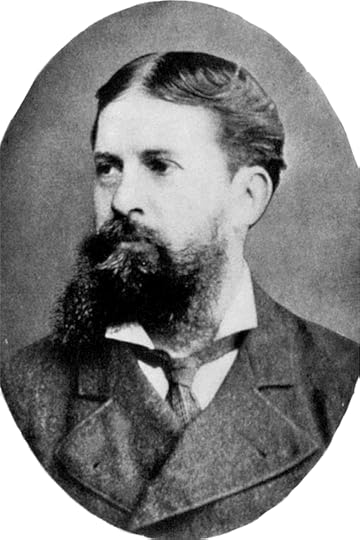

Dead Duck Day details (in Dutch)
 The full schedule for Dead Duck Day [June 5] has just been made public, in Dutch. An English translation is imminent.
The full schedule for Dead Duck Day [June 5] has just been made public, in Dutch. An English translation is imminent.
Dead Duck Day commemorates the incident that was documented in the Ig Nobel Prize-winning study “The first case of homosexual necrophilia in the mallard Anas platyrhynchos“.

May 29, 2015
Bungee jumping : the math(s)
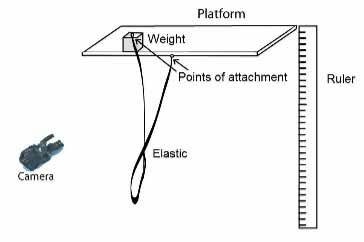 If the physics and mathematics of bungee jumping are amongst your interests, you are, as they say, spoilt for choice. There are quite a number of readily accessible academic studies at your disposal. Might we suggest (in no particular order)…
If the physics and mathematics of bungee jumping are amongst your interests, you are, as they say, spoilt for choice. There are quite a number of readily accessible academic studies at your disposal. Might we suggest (in no particular order)…
• Understanding the physics of bungee jumping by A. Heck, P. Uylings, E. Kędzierska
• Bungee jump model with increased stretch-prediction accuracy
by J. W. Kockelman, M. Hubbard
• The Greater-Than-g Acceleration of a Bungee Jumper
by David Kagan and Alan Kott
• The Mechanics of Bungee Jumping
by D. R. H. Jones
Safety notes: Before embarking on any practical bungee-based experiments involving humans, it might be an idea to read this advice provided by the University of Maryland, US.
DANGER – IMPORTANT NOTE: Bungee cords are made of shock cords (elastomers) or from rubber. They DO NOT behave as linear springs. It would be dangerous to assume linearity of a real bungee jumping cord and make calculations on this basis.
Also see: Give ‘Em Enough Rope: Perception of Health and Safety Risks in Bungee Jumpers

May 28, 2015
Eric Aston joins Luxuriant Flowing Hair Club for Scientists (LFHCfS)
D. Eric Aston has joined the Luxuriant Facial Hair Club for Scientists (LFHCfS). He says:
I am a colloid scientist, chemical engineer, and professor who pretends to be a physicist when I play with lasers for Raman spectroscopy in my microscopy lab. I teach thermodynamics and other stuff—more recently creative writing—and once donated my abundant locks for someone else to sport. I believe my hair has given me stories in a Jungian sense; if you know what that means, please inform me.
D. Eric Aston, Ph.D, LFHCfS
Professor & Interim Department Chair
Chemical & Materials Engineering
University of Idaho
Moscow, Idaho, USA

OLYMPUS DIGITAL CAMERA

Shepherd physics: Capturing a skittish lamb, using statistical physics
A trio of theoretical physicists have recently used ideas from statistical mechanics and probability theory to try to develop an optimal strategy for capturing a skittish lamb near a precipice.
The situation that they model is an idealization of “the capture of a diffusing, but skittish lamb, with an approaching shepherd on the left and a precipice on the right.” They approached this problem by examining first-passage probabilities, which describe the first time of some event (e.g., a lamb falling off of a cliff) occurring. The physicists summarized their strategy as follows:
In particular, the probability to capture the lamb is maximized when the shepherd moves at a non-zero optimal speed if the initial lamb position and the ratio between the two boundary speeds satisfy certain conditions.
Here’s further detail from the study:
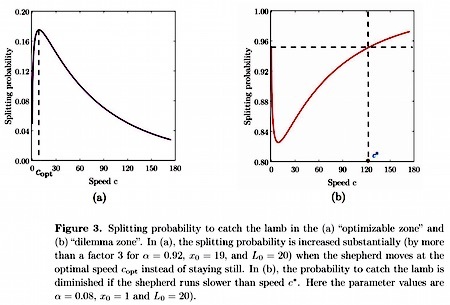
One of the physicists, Sid Redner, works at the Santa Fe Institute, so perhaps the next problem he’ll attempt is to design a strategy to help Wile E. Coyote catch the Roadrunner.
BONUS: Redner on the question: In a pro basketball game, when is a lead safe?

Marc Abrahams's Blog
- Marc Abrahams's profile
- 14 followers



